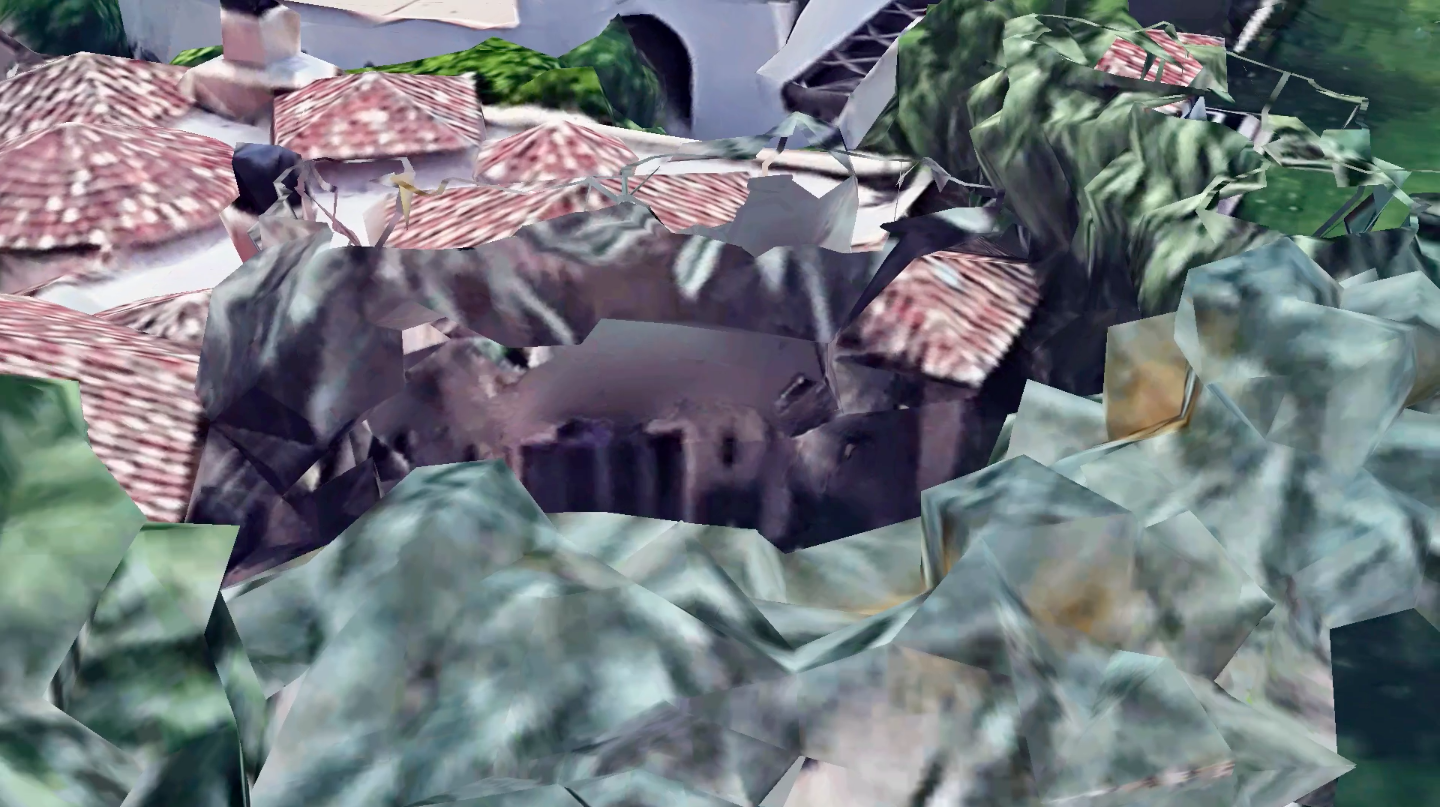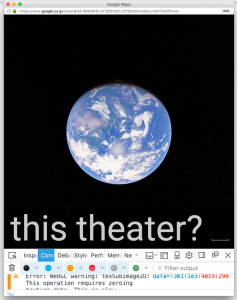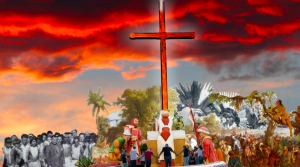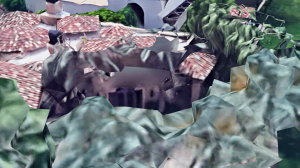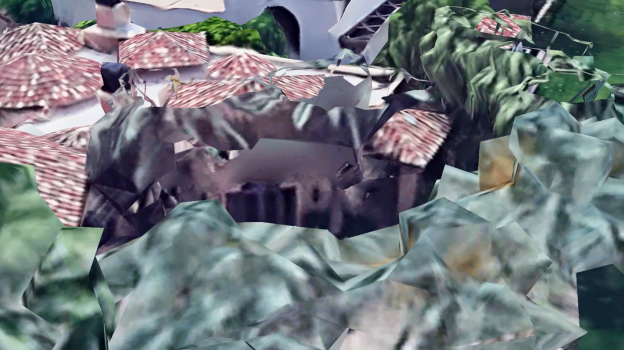
ELEMENTAL CATASTROPHE: ECOPSYCHOANALYSIS AND THE VIRAL UNCANNY OF COVID-19
Word Count: 5,432 |
Download this article
by •
004: APOCALYPSE
with POOL
artworks by SOLVEIG SETTEMSDAL
Everybody knows that pestilences have a way of recurring in the world; yet somehow we find it hard to believe in ones that crash down on our heads from a blue sky . . . plagues and wars take people equally by surprise. . . . When a war breaks out, people say: “It’s too stupid; it can’t last long.” But though a war may well be “too stupid,” that doesn’t prevent its lasting. Stupidity has a knack of getting its way ~ Albert Camus, The Plague
One of the few gratifying and exalting impressions which mankind can offer is when, in the face of an elemental catastrophe, it forgets the discordancies of its civilization and all its internal difficulties and animosities, and recalls the great common task of preserving itself against the superior power of nature ~ Sigmund Freud, The Future of an Illusion
We form a rhizome with our viruses, or rather our viruses cause us to form a rhizome with other animals ~ Gilles Deleuze and Félix Guattari, A Thousand Plateaus
CRASHING DOWN FROM A BLUE SKY
This essay seeks to apply an ecopsychoanalytic perspective to the virus and the viral. It was originally supposed to be about something else, but in the swirling crisis of the COVID-19 pandemic that plan was derailed. The coronavirus embodies, in the most literal way, much of what I call ecopsychoanalysis: a dialogue between psychoanalysis, science, philosophy, complexity theory, aesthetics, and ecology, with a particular interest in our relations to the nonhuman and climate change. These connections are now being experienced with a visceral immediacy that causes one to gasp for breath. Sigmund Freud’s uncanny arises when something seems both frighteningly alien and strangely familiar, when we are reminded of a repressed and forgotten aspect of ourselves. It is frequently produced when the borders we erect between human and nonhuman, and living and dead, are threatened, blurred, or erased. The viral uncanny may be productive as well as terrible—by calling into question traditional binaries, breaking down old assemblages, and building new alliances. Perhaps, with Freud, we might ask whether such ‘elemental catastrophes’ may also unite us, aiding in what Timothy Morton calls the ‘ontological upgrade’ required for us to continue this human story into the future.
Our era is accompanied by fractures and systemic collapses, ruptures and disruptions: climate, biosphere, extreme weather, mass extinctions, and habitat disruption, including dangerously self-amplifying feedback loops. Whole regions of the planet are burning up in flames or sinking into the sea, coral reefs are dying off, and we experience a generalized psychosocial breakdown making it hard to think. Within this frame COVID-19 has descended, crashing on our heads out of a blue sky. With its emphasis on our ability to thoughtfully engage with the most difficult aspects of our lives, can psychoanalysis, as Wilfred Bion suggests, help us now to ‘think under fire’? How can we make sense of our place within what Félix Guattari calls the three ecologies of mind, nature, and society, with flows and feedbacks circulating and undulating between human and nonhuman, semiotic and material, individual and collective, organic and technological, living and non-living? How does a narcissistic or paranoid particle in Trump or Bolsonaro infect entire societies and ecosystems? How does a microscopic, undead virus, carried on mucus expelled in a sneeze in China, shut down the Venice Carnival? “We are not outside the ecology for which we plan,” writes Gregory Bateson in Steps Towards an Ecology of Mind, hence the “charm and the terror of ecology.”
Ecopsychoanalysis views earth and mind as intertwined, folding back on one another in a multiplicity of assemblages and becomings. Nature is both reassuring and terrifying, an ambivalent, uncanny terrain. Thought and earth move together, become destabilized, flow and erupt. The word ‘environment’ makes us think of a stable and reliable backdrop as in the theater, in front of which ‘real’ human life and history takes place. This foreground-background distinction collapses during elemental catastrophes such as pandemics when we realize how enmeshed we are, and how fragile the ‘fixed’ backdrop really is. Morton suggests we may need to accept not only that the background is lost, but mourn that it was never there in the first place. COVID-19 and climate change both call on us to explore the strange ecology of nature that swirls around and through us, and threatens to destroy us—but its complex, chaotic subliminity may also show a path forward. I will keep both the very small (the virus) and the very large (climate change) in mind as I work through their implications on us, and on each other, and try to hold onto the ambivalence.
The virus is a deadly threat we need to unite against, and we need to care for those affected. Yet COVID-19 has achieved more in the fight against climate change in a few months than all the global climate summits and treaties have over decades. It has given us a chance to pause and rethink the runaway train of our civilization before it smashes into the ecological wall toward which it has been hurtling with accelerating speed, and shows how quickly society can actually change. The fixed certainties forming the unchangeable background of our societies and economies have proven more mutable than we imagined, giving rise to tremendous anxiety, but also hope, as new forms of connections become possible, putting the world into a chaotic flux without any guarantee of where it will lead. What we do now, in this moment, may help shape the future world to come, for good and ill.
THE UNDEAD VIRUS AND THE ECOLOGICAL UNCANNY
A pestilence isn’t a thing made to man’s measure; therefore we tell ourselves that pestilence is . . . a bad dream that will pass away. . . . How should they have given a thought to anything like plague, which rules out any future, cancels journeys, silences the exchange of views. They fancied themselves free, and no one will ever be free so long as there are pestilences ~ Albert Camus
The fascinating thing about partial objects, in the sense of organs without bodies, is that they embody what Freud called ‘death drive’ . . . the undead . . . something which remains alive even after it is dead . . . immortal in deadness itself . . . diabolical undeadness ~ Slavoj Žižek, The Pervert’s Guide to Cinema
The virus introduces us to the ecological uncanny, where the once-familiar but now-repressed of nonhuman nature returns to haunt us, on the borders between life and death. First of all, what is a virus? Viruses are tiny infectious agents that reproduce by entering the cells of living hosts, forcing the host cell to reproduce thousands more viruses. Viruses include genes built from RNA or DNA covered with a protein coat. Some, like the SARS-CoV-2 (the virus causing the disease COVID-19), also contain fatty ‘viral envelopes’ which can be dissolved by that ritual soapy handwashing we are now religiously engaged in. Viral pandemics such as COVID-19 often occur as a virus existing in nonhuman animals mutates, allowing it to ‘jump’ across to humans. Viruses have always been with us, but pandemics become more likely with increases in the size, density, and mobility of human populations. ‘Real’ viruses are perhaps closer to computer viruses and the machinic than to usual definitions of ‘life,’ and yet, we cannot simply place them beyond its conceptual border. According to Luis Villarreal in “Are Viruses Alive?,” viruses can be understood as “host genes that escaped their hosts” and “degenerated into parasites,” existing in “a gray area between living and nonliving.”
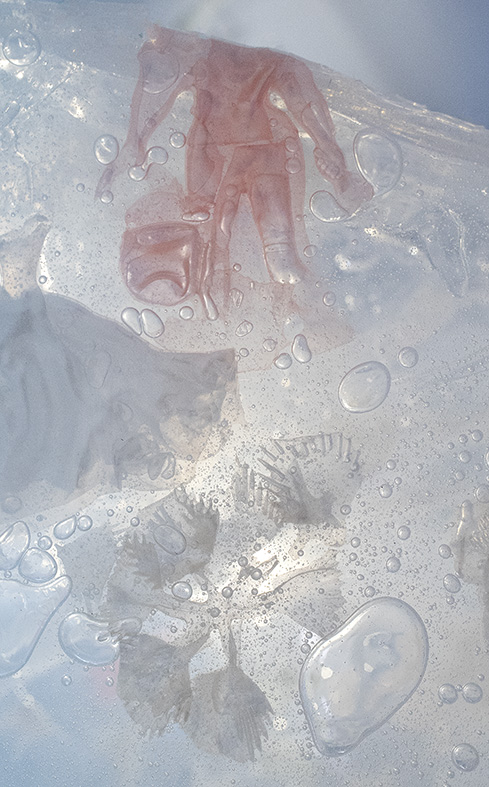
What is life? Generally, living things have cells, while viruses do not. Life reproduces, while viruses are unable to copy their own DNA. Life is metabolically active and autonomous and responds to its environment using energy to survive. Outside of a host cell, viruses are inactive, and their interaction with host cells is mostly based purely on physical shape. They exist “at the border between chemistry and life,” continues Villarreal, as “nonliving parasites of living metabolic systems,” leading a “borrowed life.” We can also view life through the concept of emergence. Just as consciousness is an emergent property of complex self-organizing networks of nonconscious neurons in the brain, life is an emergent property of an assemblage of non-living things, the same physical parts that constitute a virus, which, “though not fully alive, may be thought of as being more than inert matter: they verge on life.”
Viruses intervene powerfully in the evolutionary process, e.g., by permanently colonizing their hosts, as Villarreal writes, “adding viral genes to host lineages and ultimately becoming a critical part of the host species’ genome.” Viruses, by their quantity and evolutionary speed, are perhaps the leading source of genetic innovation, transferring genetic material between any level of biological taxonomy, connecting otherwise incommensurable gene pools. Common genes between organisms don’t necessarily prove common ancestry, as viral genes may instead “colonize two different lineages,” such that a “gene apparently bestowed on humanity by bacteria may have been given to both by a virus.” Even the creation of the nucleus itself, that epochal event leading to eukaryotes and therefore multicellular organisms, may be the result of viruses permanently territorializing their host cells. For Deleuze and Guattari, the existence of viruses moves us beyond the ‘tree-branch’ metaphor of classical evolutionary theory towards that of the rhizome, allowing highly heterogeneous assemblages to form interkingdoms, “unnatural participations” showing that nature itself is unnatural.
EXILE, ANXIETY, AND DEFENSE
A tranquillity so casual and thoughtless seemed almost effortlessly to give the lie to those old pictures of the plague: Athens, a charnel-house reeking to heaven and deserted even by the birds; Chinese towns cluttered up with victims silent in their agony; the convicts at Marseille piling rotting corpses into pits; the building of the Great Wall in Provence to fend off the furious plague-wind; the damp, putrefying pallets stuck to the mud floor at the Constantinople lazar-house, where the patients were hauled up from their beds with hooks; the carnival of masked doctors at the Black Death; men and women copulating in the cemeteries of Milan; cartloads of dead bodies rumbling through London’s ghoul-haunted darkness—nights and days filled always, everywhere, with the eternal cry of human pain. No, all those horrors were not near enough as yet even to ruffle the equanimity of that spring afternoon ~ Albert Camus
Global pandemics and climate change represent the ‘unthinkable’ possibility not only of our death but of our extinction. Accompanying the coronavirus are anxieties and defenses shared by human responses to other ecological dangers. As well as the increased depression, anxiety, and paranoia it causes in some of the patients seen in psychotherapy today, in sessions that, like so much of life, have now migrated online, others react better than the ‘average’ citizen. Some who are depressed no longer feel alone in isolation and depression, many that are paranoid now feel justified in their fears, those who feel insignificant are now part of something special, people with OCD see their own patterns generalized, and the traumatized are already familiar with trauma and have long been preparing in their own private apocalypse. In contrast, those more used to their lives going smoothly, like the citizens of Camus’ Oran, have been stopped in their tracks and may experience extreme disorientation.
The apocalyptic threat of elemental catastrophes evokes the persecutory anxieties of Melanie Klein’s paranoid-schizoid position, leading to omnipotent defenses to protect against feelings of helplessness and fragmentation. The phrase ‘(M)other Earth’ suggests our experience with nature relates to the (m)other of infancy, including not only feelings of love and being held, but fantasies of an infinitely giving Earth-breast we feel entitled to suck on with ever increasing intensity without limit. Responses to ecological crises include rage, envy, destructiveness, and paranoid attempts at omnipotent control. The manic denials involved in coronaparties on Florida beaches, Boris Johnson jovially boasting how he shook everyone’s hands in a hospital containing coronavirus victims, and the widespread, defiant “I’m not going to let the virus change my life” are clear, and comparable to similar denials of climate change (often by the same people, e.g., Bolsonaro, Trump). Blame, conspiracy theories, racist attacks, and scapegoating are also all too visible.
Anxieties of Klein’s depressive position are also triggered by environmental crises, including loss and mourning, the difficulty acknowledging human culpability and guilt, as well as tolerating ambivalence. Drawing on Freud’s concept of anticipatory mourning in “On Transience,” it might be expected that individuals and societies either won’t consciously care about ecological dangers, or will become actively destructive and self-destructive as a defense against the grief yet to come. Alternatively, there is a premature form of anticipatory mourning, a falling into despair while it is still not too late to avoid the feared loss. According to Harold Searles in “Unconscious Processes in Relation to Environmental Crisis,” “Mankind is collectively reacting to the real and urgent danger from environmental pollution much as does the psychotically depressed patient bent upon suicide by self-neglect.” Our deteriorating environment, then, becomes both the means to this end and a defense, so that “instead of feeling isolated within emotional depression, one feels at one with everyone else in a ‘realistically’ doomed world.” We have a lot to mourn: species, habitats, separation from those we love, the loss of a world that has suddenly evaporated.
Both the pandemic and climate change also produce fantasies of eliminating Oedipal rivals in the conflict between generations, Oedipus himself being the leader of a society gripped by a deadly plague that “burns on, . . . pitiless, / Though pallid children laden with death, / Lie unwept in the stony ways.” Today we hear common refrains such as “it’s fine, the virus only kills old people,” “boomer killer,” or fantasies of destroying the world for children and future generations. We can also understand the ‘moralistic’ tone of some ecological writing as involving the projection of Oedipal guilt—pandemics and climate change as punishment for the rape of mother earth. The hero of Sophocles’ great tragedy himself initially reacts to the pestilence of Thebes with a paranoid wielding of power, but he eventually finds the courage to feel the grief of his peoples’ suffering and face the horror of the plague wherever it leads, even to his own destruction.
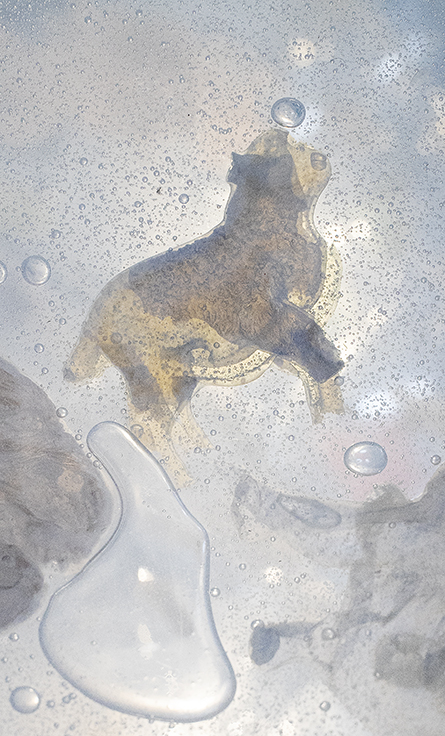
One shared contemporary experience is the crush of isolation, a kind of sedentary exile. Camus writes that “the first thing that plague brought to our town was exile . . . a void within which never left us, that irrational longing to hark back to the past or else to speed up the march of time, and those keen shafts of memory that stung like fire.” Trapped in time as well as place “we returned to our prison-house” and “even if some were tempted to live in the future, they had speedily to abandon the idea . . . once they felt the wounds that the imagination inflicts.” At the same time, for those whose painful longings focused on separation from a loved one, the “egoism of love made them immune to the general distress” as their “despair saved them from panic.” Today, for those fortunate enough to be able to stay at home in quarantine in relative economic and physical security, there are possibilities for dealing with exile unimaginable to the citizens of Oran, as well as the potential introspective benefits solitude and even boredom can bring.
Whether or not inoculated by the power of love, the pain of isolation has led to the emergence of new forms of connections and socialities, new forms of work, play, and relationships. Some find these alienating and disconcerting. For others, something new and creative is coming into being. It is a strange time when the young must teach the old how to live, or at least provide the technical skills to get Zoom and FaceTime to work. The varying defenses and subject-positions (individual and collective) mobilized against the anxiety of a threatening and threatened ecology involve unconscious alliances giving rise to social phantasy systems, through interactions and feedbacks at all levels, in a process of ongoing recursivity. And, while some are bound to their homes, outside the air is clearer than we can remember, and animals, birds, and fish are returning to places long abandoned to the human realm. Perhaps exile is for the lucky ones.
DEATH, HORROR, AND THE GROTESQUE
All I maintain is that on this earth there are pestilences and there are victims, and it’s up to us, so far as possible, not to join forces with the pestilences ~ Albert Camus
Animals are packs . . . [which] form, develop, and are transformed by contagion ~ Gilles Deleuze and Félix Guattari
In Psychoanalysis and Ecology at the Edge of Chaos, I suggest that animal metamorphosis in horror can be understood partly as a return of the repressed and once familiar from the ecological unconscious. Deleuze and Guattari refer to Lovecraft’s terms ‘Outsider’ and ‘Thing,’ “which arrives and passes at the edge, which is linear yet multiple, ‘teeming, seething, swelling, foaming, spreading like an infectious disease, this nameless horror.’” Barbara Creed, in Phallic Panic, describes threats to the borders between human/nonhuman, man/woman, life/death as the primal uncanny of our culture. We have already looked at the living/dead border occupied by the viral uncanny. We can now turn to another, that of the human/nonhuman, which for Creed focuses on the animal, and it is from animals that pandemics such as COVID-19 arise as a result of increased human exploitation of the natural world.
The concept of the nonhuman animal extends back to the origin of psychoanalysis with Freud’s clinical writings on the rat man, the wolf man, and Little Hans’ horses, as well as his cultural writings on the origin of religion and civilization. In both, animal phobias and totems involve displacement of Oedipal anxiety onto the animal substitute. Animal symbols also function in the social ecology of groups, as discussed by both Vamik Volkan and myself, as both totemic large-group symbols (British Lion), and ‘suitable reservoirs’ for archaic aspects of self to dehumanize the enemy during scapegoating and intergroup violence (rat, cockroach). However, prior to humans being forced to take on animal characteristics (dehumanization), first the animal must take on rejected and projected human attributes (deanimalization), with genocidal and ecocidal violence on both sides of the border. Many tropes Freud identified with the uncanny also appear in his studies of the comic: puppets, automatism, eyes that pop out, return of the old and once familiar, intellectual uncertainty, borders transgressed/blurred, doubles, and repetition. The link between the comic and uncanny suggests that if culturally we repress such borderline phenomena, and those transitional phenomena described by Donald Winnicott, their return will be traumatic.
The coronavirus makes us all too aware of the problem of death, something we usually try to ignore as we obsessively follow daily death tolls and exponential growth curves. As Freud states in “Thoughts for the Times on War and Death,” “We showed an unmistakable tendency to put death on one side, to eliminate it from life. We tried to hush it up,” an attitude towards death which “has a powerful effect on our lives. Life is impoverished, it loses in interest.” As with war, pandemics sweep away the “conventional treatment of death. Death will no longer be denied; we are forced to believe in it. . . . Life has, indeed, become interesting again.” War and pandemics, despite seeming inevitable, need to be resisted because of the terrible suffering they cause, yet by forcing us to confront death, they make us feel alive even while killing us. War, Freud continues, “strips us of the later accretions of civilization, and lays bare the primal man in each of us. It compels us once more to be heroes who cannot believe in their own death; it stamps strangers as enemies, whose death is to be brought about or desired; it tells us to disregard the death of those we love.” For Camus too there can be no final victory against death: “the plague bacillus never dies or disappears for good . . . the day would come when, for the bane and the enlightening of men, it would rouse up its rats again and send them forth to die in a happy city.”
Death is a border, and every border has two sides. For Kristeva, in Powers of Horror, the abjection of the corpse is “a border that has encroached upon everything. It is no longer I who expel. ‘I’ is expelled.” While, for Deleuze and Guattari, death is everywhere “as that ideal, uncrossable boundary separating bodies, their forms, and states, and as the condition, even initiatory, even symbolic, through which a subject must pass in order to change its form or state.” The double-sided nature of this border is captured in the uncanny image of the grave-womb, a death that gives birth. Freud writes this “unheimlich [uncanny] place . . . the entrance to the former Heim [home] of all human beings . . . the unheimlich is what was once heimisch, familiar; the prefix ‘un’ is the token of repression.” Similarly, in “The Theme of the Three Caskets,” Freud refers to the three aspects of the mother for man, “the mother herself, the beloved one who is chosen after the pattern, and lastly Mother Earth who received him once more.” On the other side of death, the other side of horror and the uncanny, lies the comic, and the possibility of renewal. From the Mexican Day of the Dead to the carnival monsters described by Mikhail Bakhtin in Rabelais and His World: “’Downward’ is earth . . . an element that devours, swallows up (the grave, the womb) and . . . an element of birth. . . . To degrade is to bury, to sow, and to kill simultaneously, in order to bring forth something more and better.”
COVID-19 forces us to be conscious of our bodily openings that we now need to police with utmost vigilance, evoking what Bakhtin calls the grotesque. Grotesque bodies are “ambivalent and contradictory,” they are “ugly, monstrous, hideous from the point of view of ‘classic’ aesthetics . . . the aesthetics of the ready-made and completed.” Behind our obsessional control, the grotesque body pulsates, and opens to the world. It is “unfinished, outgrows itself, transgresses its own limit,” especially where the world enters and leaves the body, and where the body meets the world, “the open mouth, the genital organs, the breasts, the phallus, the potbelly, the nose.” As in the plagues and carnivals of old, in many countries today we must wear a mask, to protect others and ourselves. For Bakhtin, the carnival mask (comic and uncanny) is involved in “transition, metamorphosis, the violation of natural boundaries,” containing “the playful element of life.” In Romanticism, he continues, “the mask is torn away from the oneness of the folk carnival concept” and it now “hides something, keeps a secret, deceives.” It loses much of its capacity for regeneration, acquiring “a somber hue” so that now a “terrible vacuum, a nothingness lurks behind it.” With the repression of carnival, the ‘comic monster’ loses its ability to defeat the cosmic terror through laughter and becomes itself a source of terror. The familiar is turned into terror, the comic into tragedy, and laughter into uncanny horror.
CORONAVIRUS AND GLOBAL PHASE SHIFTS AT THE EDGE OF CHAOS
[E]ach of us has the plague within him . . . we must keep endless watch on ourselves lest in a careless moment we breathe in somebody’s face and fasten the infection on him. What’s natural is the microbe. All the rest, health, integrity, purity . . . is a product of the human will, of a vigilance that must never falter ~ Albert Camus
The body without organs is not a dead body but a living body all the more alive and teeming once it has blown apart the organism and its organization. Lice hopping on the beach. Skin colonies. The full body without organs is a body populated by multiplicities ~ Gilles Deleuze and Félix Guattari
The ecological uncanny of the coronavirus, as well as terrible destruction and suffering, also offers a pause in the headlong rush of our ecocidal civilization, a chance to rethink what’s really important, and provides a shared global experience allowing for the possible emergence of a sense of a global culture. There are many horrifying signs which should never be downplayed, from the devastation of the virus itself, to the suspension of democracy in Hungary, and the dismantling of ecological protections and personal freedoms. But perhaps this flux, this chaos, may “bring forth something more and better” with new productive becomings and assemblages involving heterogeneous relationships in the trans-individual and sub-individual webs of connectivities. This may be a wild hope, but perhaps we should remember with Bakhtin that ambivalence means not only being able to accept the dark side of the light, but also the light side of the dark.
Complexity science studies how biological systems tend to occupy the edge of chaos, the fractal borderzone between stability and instability, providing maximum ecological flexibility and the most fruitful ground for emergent pattern formation. In mental ecology, Stanley Palombo shows how small pieces of insight in psychoanalysis self-organize into ever larger structures. The same applies to the emergence of ‘self,’ where larval subjects and partial objects self-organize into assemblages with emergent properties below and above the human subject. In the clinical space, psychoanalysis aims to destabilize pathological infantile attractors, psychic black holes. While most change is confined to the local level and absorbed by psychic defenses, as the system reaches self-organized criticality the tiniest local shift can precipitate system-wide cascades of disorder and reorganization. These models of dynamic change are crucial for understanding the psychosocial responses to environmental crises such as climate change and global pandemics.
COVID-19 is leading to dramatic destabalization of the world’s economic and social systems, with unpredictable and complex potential outcomes and feedbacks. Whether these are temporary or more long term we don’t yet know. Some tendencies draw us towards fascist reterritorializations, others to openings that may lead to a global phase shift in our societies and psyches. In complexity theory, periods of instability are necessary stages on the dynamic path towards greater self-organization, but without guarantees that what emerges will be more adaptive. Many past societies entered a rapid period of catastrophic collapse shortly after reaching their peak. In a highly complex interconnected system, relatively small changes can have dramatic, unpredictable effects on the whole. Our task then becomes experimental, including the search for ‘lever points’ to open up possibilities of radical transformation and renewal. This needs to be done with caution. As Deleuze and Guattari put it, wild destratification is not the answer. Instead, they suggest attaching yourself to a stratum to “experiment with the opportunities it offers, find an advantageous place on it, find potential movements of deterritorialization, possible lines of flight, experience them, produce flow conjunctions here and there, try out continuums of intensities segment by segment.”
The signs of solidarity in the face of elemental catastrophe Freud discerned as “one of the few gratifying and exalting impressions which mankind can offer” is being tested today, and it is unclear what comes next, yet out of crisis can come renewal. The strange ecology of nature is both frightening and liberating, with its nonlinearity and chaos, birth and death, from the very small of the virus to the very large of climate change. The outcome of our current period may well be determined by those who, in the words of Camus, are “unable to be saints but refusing to bow down to pestilences, strive their utmost to be healers.”
Bakhtin, Mikhail. Rabelais and His World. Translated by Hélène Iswolsky, Indiana UP, 1984.
Bateson, Gregory. Steps Towards an Ecology of Mind. Chicago UP, 2000.
Bion, Wilfred. The Long Week-End 1897-1919: Part of a Life. Fleetwood Press, 1982.
Camus, Albert. The Plague. Translated by Stuart Gilbert, Penguin, 2010.
Creed, Barbara. Phallic Panic: Film, Horror and the Primal Uncanny. Melbourne UP, 2005.
Dodds, Joseph. “Animal Totems and Taboos: An Ecopsychoanalytic Perspective.” PsyArt Journal for the Psychological Study of the Arts, 2012.
—. “Otto Fenichel and Ecopsychoanalysis in the Anthropocene.” Psychoanalytic Perspectives, vol. 16, no. 2, 195-207, 2019.
—. Psychoanalysis and Ecology at the Edge of Chaos: Complexity theory, Deleuze|Guattari and Psychoanalysis for a Climate in Crisis. Routledge, 2011.
Deleuze, Gilles, and Felix Guattari. A Thousand Plateaus: Capitalism and Schizophrenia. Minnesota UP, 2003.
Freud, Sigmund. The Standard Edition of the Complete Psychological Works of Sigmund Freud. Edited and translated by James Strachey, Hogarth Press, 1953-1974. 24 vols.
—. Jokes and Their Relation to the Unconscious. The Standard Edition, vol. VII, 1905, pp.1-127.
—. Totem and Taboo. The Standard Edition, vol. XIII, 1913, pp. vii-162.
—. “The Theme of the Three Caskets.” The Standard Edition, vol. XII, 1913, pp. 289-302.
—. “Thoughts for the Times on War and Death.” The Standard Edition, vol. XIV, 1915, pp. 273-300.
—. “On Transience.” The Standard Edition, vol. XIV, 1916, pp. 303-7.
—. “The `Uncanny.’” The Standard Edition, vol. XVII, 1919, pp. 217-56.
Guattari, Felix. The Three Ecologies. Athlone Press, 2000.
Kristeva, Julia. Powers of Horror: An Essay on Abjection. Columbia UP, 1982.
Morton, Timothy. Ecology Without Nature: Rethinking Environmental Aesthetics. Harvard UP, 2007
—. “Thank Virus for Symbiosis.” The Corona Essays, 4 Apr. 2020, https://strp.nl/program/timothy-morton.
Phillips, Adam. On Kissing, Tickling, and Being Bored: Psychoanalytic Essays on the Unexamined Life. Harvard, 1994.
The Pervert’s Guide to Cinema. Directed by Sophie Fiennes, Mischief Films, 2006.
Searles, Harold. “Unconscious Processes in Relation to the Environmental Crisis.” Psychoanalytic Review, vol. 59 no. 3, 1972, pp. 361-74.
Sklar, Jonathan. “A Meditation on Death.” Psychoanalysis and Politics, 30 Mar. 2020, https://www.psa-pol.org/reflections-in-our-times/a-meditation-on-death/.
Sophocles. Oedipus Rex. Dover, 1994.
Palombo, Stanley. The Emergent Ego: Complexity and Coevolution in the Psychoanalytic Process. International UP, 1999.
Priel, Beatriz. “Thinking Extreme Social Violence: The Model of The Literary Plague.” International Journal of Psychoanalysis, vol. 88, no. 6, 2007, pp. 1457-72.
Villarreal, Luis. “Are Viruses Alive?” Scientific American, 8 Aug.2008, https://www.scientificamerican.com/article/are-viruses-alive-2004/.
Volkan, Vamik. “Animals as Large-Group Symbols.” Academia, 2000, https://www.academia.edu/25208096/ANIMALS_AS_LARGE_-GROUP_SYMBOLS.
Webster, Jamieson. “Psychoanalysis in Time of Plague.” The New York Review of Books, 1 Apr.2020, https://www.nybooks.com/daily/2020/04/01/psychoanalysis-in-time-of-plague/.
Winnicott, Donald. Playing and Reality. Routledge, 1999.
POOL (2019)
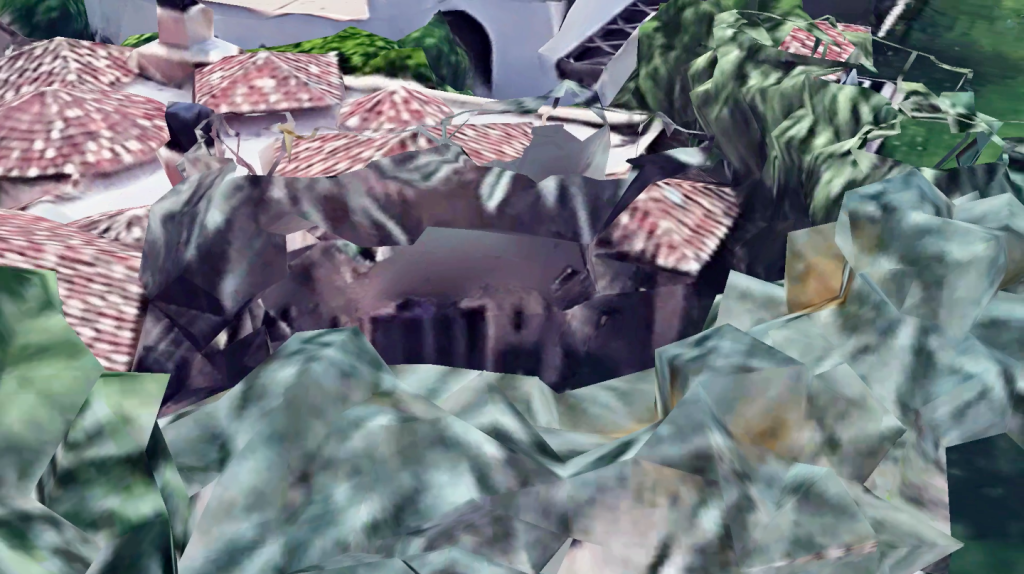
Pool looks at mistranslations that occur between us and our technology in interpreting material reality: what goes missing, and what is created.
We often look at what is lost through an increasingly digital mapping of our world. Material is reduced to interlocking planes through Google Earth’s 3D algorithms, artifacts rendered as skins without depth. Material reality, and interaction between materials becomes redundant. In 3D rendering place, water becomes crystalline structure hovering in mid air, colors absorbed by trees separate from their trunks independent of gravity: complex organic shapes seen through a cubist digital filter. A world as immaterial skin that can be entered into and explored from the inside, where the outside is copied—only inverted, sliding effortlessly through the membrane.
Pool looks at the creative potential of the limitations of this process rather than what is lost at the intersection of physical and digital representation, revealing unwitting creative potential and a virtual cubist tangle of our reality.
DR JOSEPH DODDS, PHD writer
Joseph Dodds, PhD, is a Psychoanalyst in private practice (Czech Psychoanalytical Society, International Psychoanalytical Society), Chartered Psychologist (British Psychological
Society), Registered Clinical Psychotherapist (UK Council for Psychotherapy, Czech Association for Psychotherapy), and Lecturer and Researcher (University of New York in Prague, Anglo-American University). He is author of the book Psychoanalysis and Ecology at the Edge of Chaos (Dodds, 2011, Routledge) and various other publications on psychoanalytic applications to art, society, film, neuroscience, culture and climate change.
SOLVEIG SETTEMSDAL artist
Solveig Settemsdal’s practice moves through the mediums of sculpture, drawing, video, sound and photography. She is fascinated by the mutability of object and medium, and our indescribable and often impossible relationship to our environment. Her recent solo show Pool looks at mistranslations between us and our technology in interpreting material reality: what goes missing, and what is created.
Settemsdal aims to meld internal and external space, to fold, collapse and reconstruct the solid architecture of our surroundings into the fluid realm of thought, where opposing time scales can exchange behaviours.
POOL (2019): Created as a solo residency exhibition at Unit 1 Gallery, London.
Sound credit: Edison and Settemsdal (2019).
© Copyright for all texts published in Stillpoint Magazine are held by the authors thereof, and for all visual artworks by the visual artists thereof, effective from the year of publication. Stillpoint Magazine holds copyright to all additional images, branding, design and supplementary texts across stillpointmag.org as well as in additional social media profiles, digital platforms and print materials. All rights reserved.
